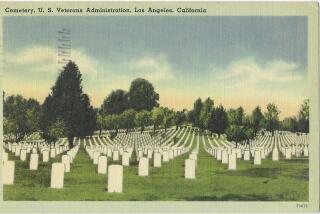Potter’s Fields Still Serve Nameless Poor
- Share via
BOSTON — The people buried in the potter’s field at Fairview Cemetery did not always go gentle into that good night, but they went empty-handed, and sometimes unidentified.
Fairview contains the city’s welfare lot, the place where the poor and the unknown are buried. Most big cities have some version of a potter’s field. Boston’s has been getting more use in recent years, with the area hard-hit by recession.
The plot, surrounded by private lots covered with headstones, looks like an empty field. But close inspection reveals small metal circles, like large golf tees, inserted in rows along the ground. Each circle has a number--the number given to the body laid to rest there.
“I think that’s the saddest thing,” said the Rev. James Riihimaki, an Episcopal priest from Quincy who--along with a funeral director--was the lone mourner at a recent burial of a 74-year-old man who died of cirrhosis.
The man was buried in a simple, cloth-covered box, in plot number 15 on row 29.
“When you have huge wakes there’s a lot of tears but there’s a certain joy that that person has meant something to somebody,” Riihimaki said. “But here, maybe the most important thing is that this person is special in God’s eyes.”
The term “potter’s field” has been handed down from biblical times. The New Testament tells of temple elders using the money Judas received for betraying Jesus to buy a potter’s field--a reference that could mean the field where potters found their clay, although scholars are unclear about the exact meaning.
Records indicating the cause of death for people in the welfare lot reflect all of society’s social ills. While many people die of natural causes, there are others who die violently, like the “unknown white male” buried May 5 who died of stab wounds and drowning. A few people buried this year died of AIDS. Others, like “baby boy Reed,” are listed as fetal deaths.
The number of people buried each year at Boston’s welfare lot hovered above 100 in the recessionary late 1970s and dropped to the 30s in the booming mid-1980s. It edged up to 43 in 1990 and 52 in 1991, but this year has seen only 32 burials.
Sometimes bodies are buried months after death, especially if the body needs to be examined and tested by the state medical examiner to determine the cause of death. Bodies are always sent to a funeral director in Boston, even if there are no relatives.
In New York City, the potter’s field is located on an island in the East River, tended by prisoners. The city buries about 3,000 people there every year, about half of them infants.
In Los Angeles, the bodies of indigents are cremated. If nobody steps forward within three years to claim the ashes, they are placed in a mass grave. Los Angeles County handled 2,688 indigent deaths in fiscal 1991.
More to Read
Sign up for Essential California
The most important California stories and recommendations in your inbox every morning.
You may occasionally receive promotional content from the Los Angeles Times.










